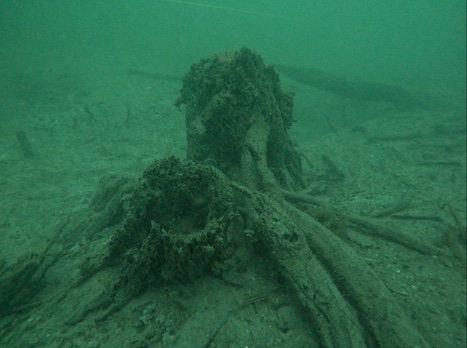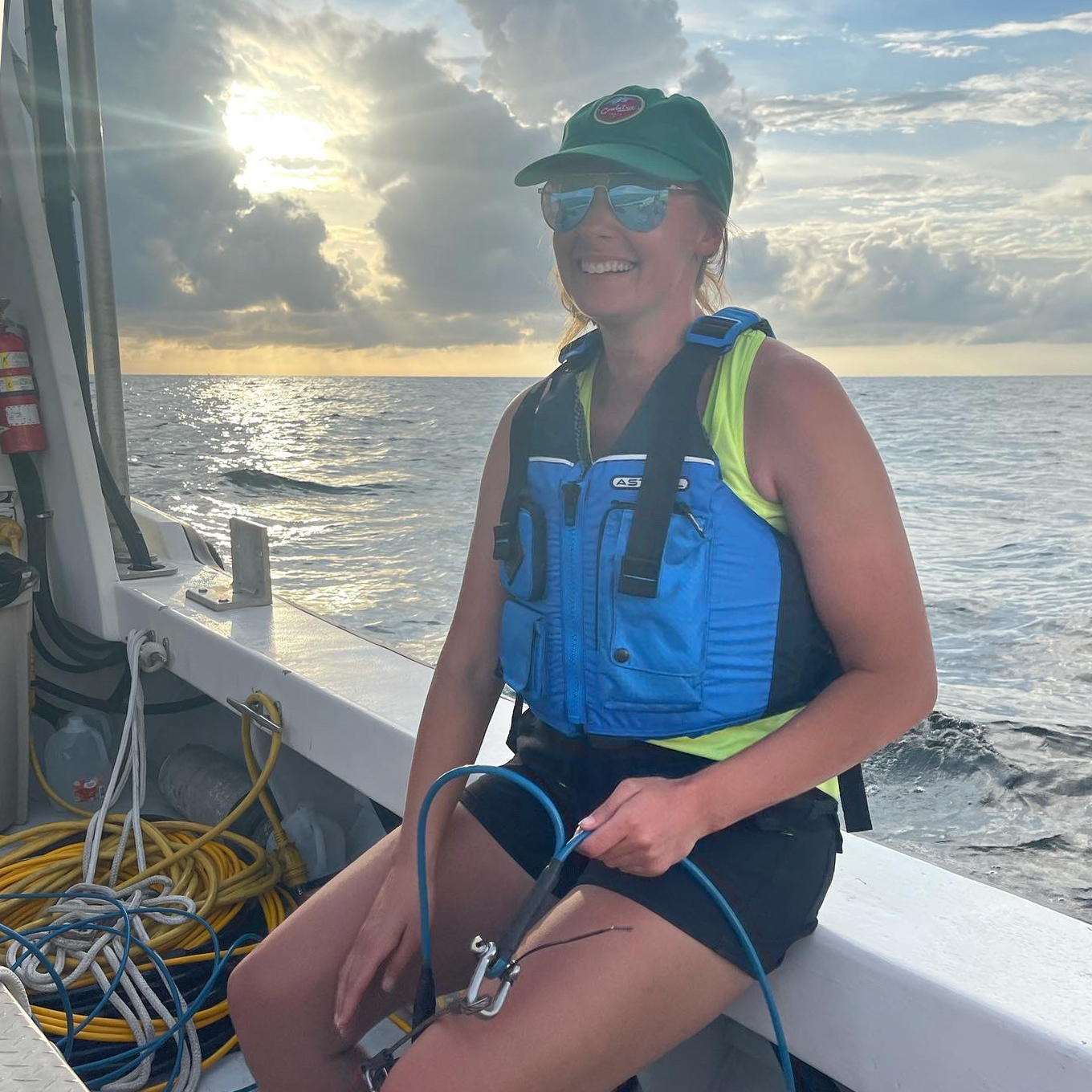LSU Researchers Discover 'Swamp Power' Preserved Ancient Underwater Forests

LSU researcher Kristine DeLong and her team discover how ‘swamp power’ preserved ancient underwater forests in the Gulf of Mexico despite rising seas, shifting coastlines and climate change
The ancient underwater forest about eight miles off the coast of Gulf Shores, Alabama, is known as a time capsule from the last ice age—and for the first time, researchers understand why. Chemical and pollen analyses found the bald cypress trees were buried in sediment from swamp and marsh ecosystems, like those in southeastern United States today. Such low-oxygen environments helped preserve the wood, which is more than 60,000 years old and grew on land at a time when sea levels were much lower than they are today. While ocean water and waves normally erode coastal deposits, the Alabama Underwater Forest, as it’s become known, was quickly buried in low-oxygen muds and sediment, forming a protective layer. When that layer was partly removed in 2004 by Hurricane Ivan, it revealed standing tree stumps at the bottom of the ocean, where few expected to find them.
In a new paper in the journal Geochemistry, Geophysics, Geosystems, LSU researcher and professor of geography and anthropology Kristine DeLong, LSU alumna Kendall Fontenot and co-authors at the University of Southern Mississippi, University of Idaho, Bureau of Ocean Energy Management and the Naval Research Laboratory share their findings, which hint at remarkable resilience of coastal ecosystems despite rising seas, shifting coastlines and climate change.
“As a marine geochemist, I look at how the chemical properties of the seafloor and subsurface interact with the marine environment,” lead author Kendall Fontenot said. “In the case of the Underwater Forest and adjacent sites, we see specific biogeochemistry alongside physical mechanisms promoting the preservation and storage of vast organic layers, which is important to consider given current and impending rising sea levels threatening coastal environments.”
Alongside the Alabama Underwater Forest, the researchers also studied ancient trees at a different site offshore in Mississippi, about 12 miles southeast of Horn Island. There, the researchers found well‐preserved pollen and woody peat deposits buried in the sea floor. These were “only” about 11,000 years old but showed similar patterns of preservation enabled by swampy conditions during the early Holocene.
DeLong and her team have been studying these underwater forests and rich natural archives since 2012. Step by step, she’s confirming her early guess that the Alabama Underwater Forest isn’t an isolated example, while this level of preservation seldom is found in marine and coastal areas.

Lead author Kendall Fontenot conducted field work for the study, revealing how initial swamp and marsh conditions preserved the ancient underwater forest off the coasts of Alabama and Mississippi, despite being underwater for thousands of years. Fontenot earned her bachelor’s and master’s degrees at LSU in coastal environmental science and physical geography and geology, respectively. While an undergraduate student, she received the LSU Distinguished Undergraduate Researcher and Distinguished Communicator medals. This fall, she will pursue a Ph.D. at the University of Washington School of Oceanography working with Assistant Professor Kendall Valentine—another LSU alumna.
“This study is an important step in understanding the conditions that led to the preservation of this ice age forest ecosystem, which will help resource managers, stakeholders and scientists find other such locations on the continental shelves of our coasts,” DeLong said.
Biogeochemical processes that promote preservation, including anoxia, or low oxygen, are innate to the Gulf Coastal Plain environments such as swamps and marshes. What gets buried in swamps in Louisiana, Mississippi, Alabama, Florida and Texas today might remain intact for thousands of years into the future, despite subsidence, erosion and rising seas.
“Snapshots of Coastal Ecology Using Multiproxy Analysis Reveals Insights into the Preservation of Swamp and Marsh Environments Since the Late Pleistocene,” Geochemistry, Geophysics, Geosystems
Latest LSU News
- LSU Researchers Excavate Earliest Ancient Maya Salt WorksWith funding from the National Science Foundation, a team of archaeologists from LSU and the University of Texas at Tyler have excavated the earliest known ancient Maya salt works in southern Belize, as reported in the journal Antiquity. The team was led by LSU Alumni Professor Heather McKillop, who first discovered wooden buildings preserved there below the sea floor, along with associated artifacts, and the only ancient Maya wooden canoe paddle in 2004. Her key collaborator, Assistant Professor Elizabeth Sills at the University of Texas at Tyler, began working with McKillop as a master's student and then as a doctoral student at LSU.
- LSU Invited to Join Prestigious Military AssociationLSU has been unanimously invited to join the prestigious Association of Military Colleges and Schools of the United States, or AMCSUS. The invitation was issued because of the university's long-standing military tradition, active ROTC programs, and its current efforts to support the U.S. military through cybersecurity research and education.
- Harnessing a Tweet Storm: Using Fairness-aware Artificial Intelligence and Social Media to Improve Hurricane Resilience, and MoreHow we can use artificial intelligence for social good? Artificial intelligence, or AI, can help us make decisions, but one of the biggest concerns is the bias problem.
- New LSU Construction & Advanced Manufacturing Building Aims to Elevate Louisiana’s EconomyLSU marked the final day of President William F. Tate IV’s statewide bus tour by announcing the vision for a new $107 million Construction & Advanced Manufacturing Building and a $15 million leadership gift from Art Favre, founder of Performance Contractors and a graduate of the first LSU construction management class in 1972.
- LSU Student Team’s FarmSmart App Helps Farmers Manage Crops, Weeds With AILSU students and alumni have created a new, AI-powered tool called FarmSmart that allows farmers and gardeners to quickly access actionable intelligence on how to best manage their crops and get rid of weeds.
- Public Invited to Attend Kick-Off for LSU's Second Annual Scholarship First Bus Tour in Start, LouisianaSpecial Guests include Congresswoman Julia Letlow and Rising Country Artist and LSU Student, Timothy Wayne











